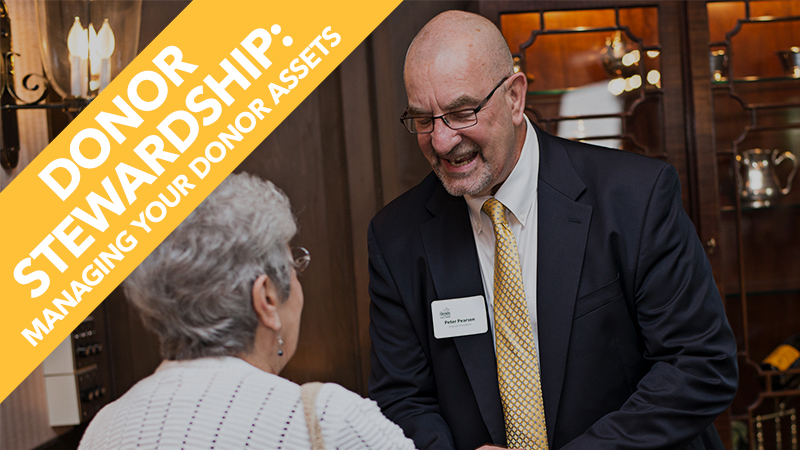Donor Stewardship: Managing Your Donor Assets

What does stewardship really mean, anyway? Webster’s defines stewardship as “the careful and responsible management of something entrusted to one’s care.” While most of us recognize that this refers to the responsible management of an organization’s financial assets, for nonprofits it also means the careful and purposeful management of donor relationships. These relationships have significant and lasting value, and sincere stewardship of them is an important responsibility that can impact future support of your library.
While stewardship – including donor stewardship – is everyone’s responsibility and should be a part of the library’s culture, there are very specific procedures that must be incorporated into all fundraising and communication activities. These include:
Gift Acknowledgement – Timely (ideally within 2 days) acknowledgement of a gift received should include the name of the receiving organization (the library, Friends, or foundation) as well as the amount and date of the gift.
Thank You – Gratitude for a gift given should be expressed in writing from library leadership (Director, Foundation, or Friends Chair). This can be a hand-written card or an email (followed by a phone call or personal visit for emphasis). Some organizations will ask those most impacted by a gift (i.e. children, teens, special populations, or volunteers) to send an additional thank you note.
Donor Recognition – Donors can be publicly recognized for their generosity in various ways:
- Honor Rolls or Societies. Recognizing donors by giving levels can be a way to encourage a sense of community among your donors. It can also introduce friendly competition as donors try to advance to the next giving level.
- Donor Walls. Typically used in building campaigns, but donor walls can also include significant annual and lifelong donors. Libraries are finding innovative ways to recognize donors in their physical space.
- Named Spaces. Specific policies should be adopted to anticipate donors’ interest in naming specific spaces in the library, or the library building itself. This can be tricky if not well-thought out and specified in a written policy (i.e. will the city allow the naming of a building, what types of gifts warrant naming rights, what if a name must be removed in the future, etc.)
- Donor Profiles. Featuring major or lifetime donors in newsletters, annual reports, and other community publications, is another way to recognize special donors.
- Plan Events. Events can be small, intimate occasions with major donors designed to deepen donor engagement or large, public events where the library can build connections with current and future donors.
- Special Invitations and Communications. Special invitations to library programs or hand-written notes, and visits or emails from library leadership throughout the year are also important ways to make donors feel special and appreciated.
NOTE: Sometimes donors prefer to remain anonymous. Be very careful to honor those donor preferences and make sure they are not listed in public recognition formats.
Donors who express their support for the library with a financial gift should be considered investors. They care about the library enough to provide enhanced support beyond their tax contributions. They are partners with you to provide exceptional library service to the community. Remember that it is just as important to steward the donor relationship as it is the gift they make.

